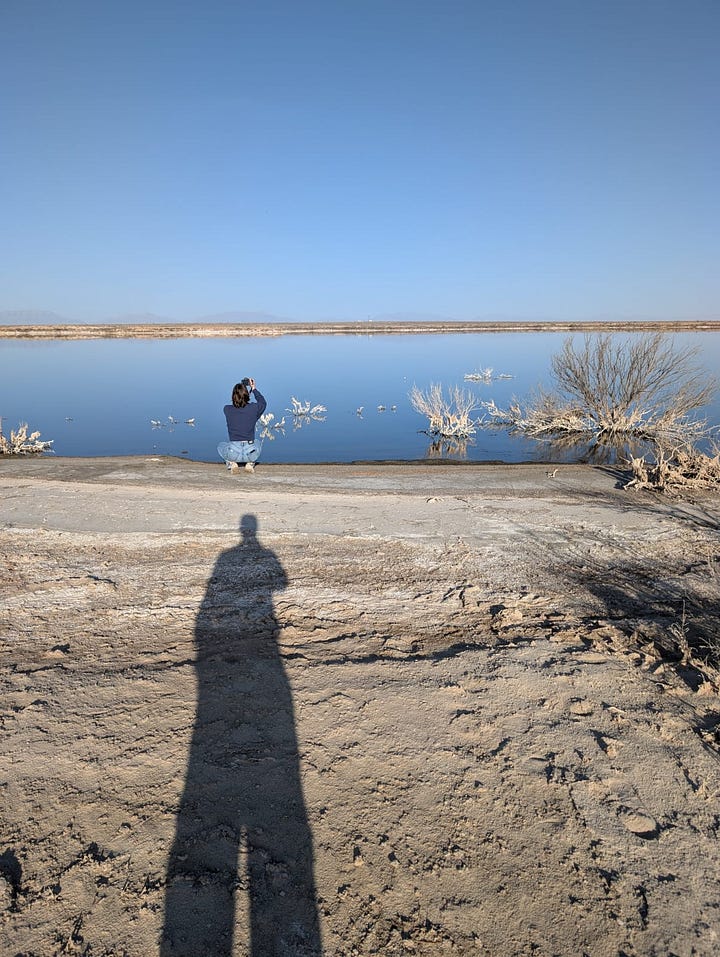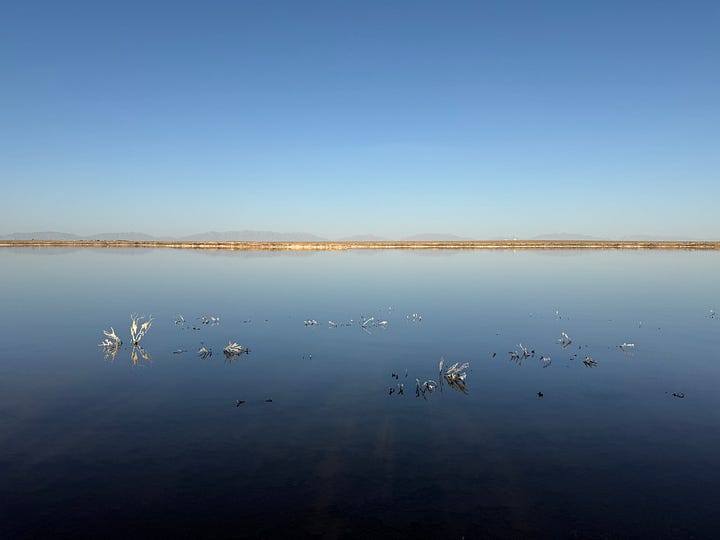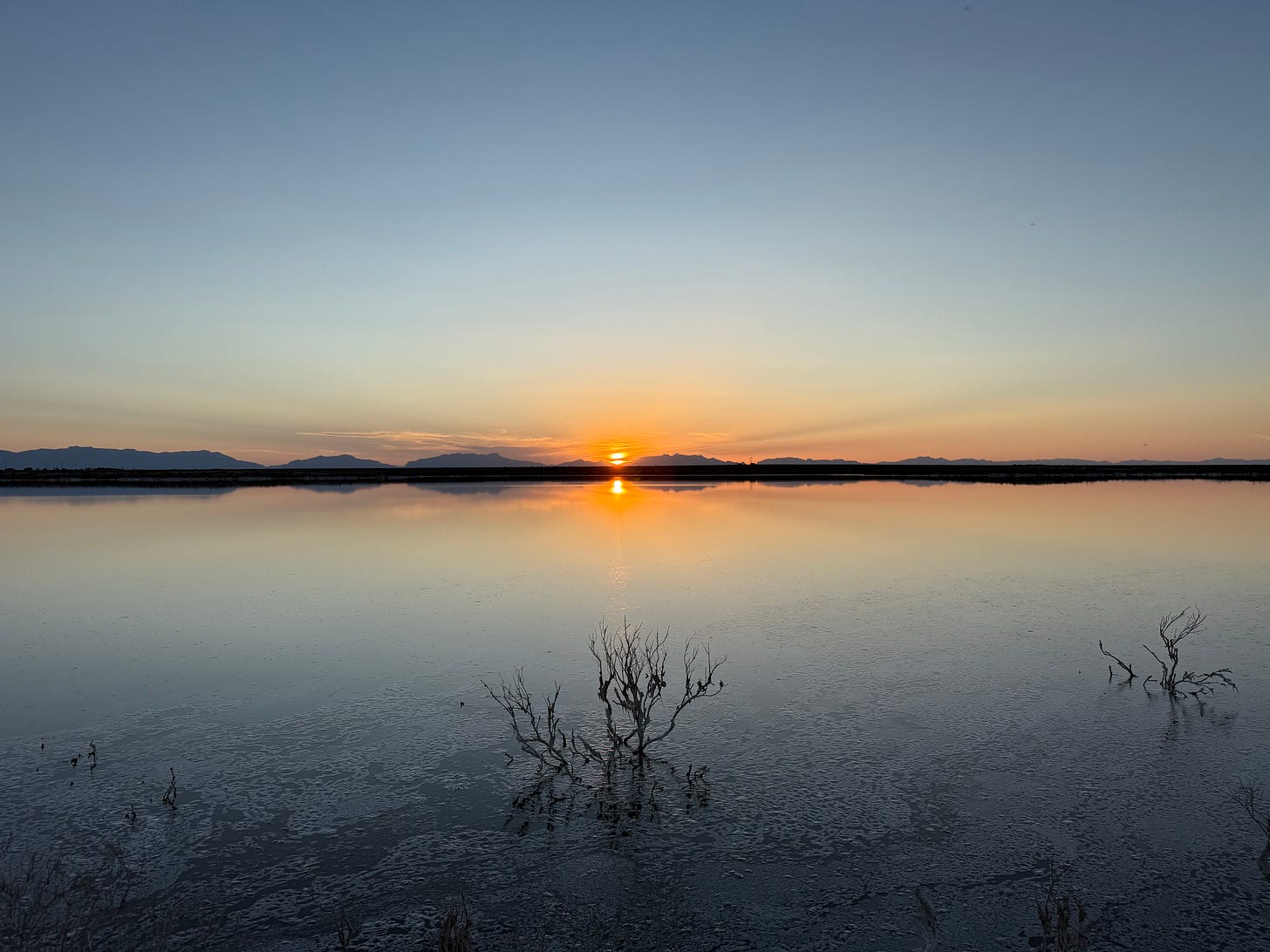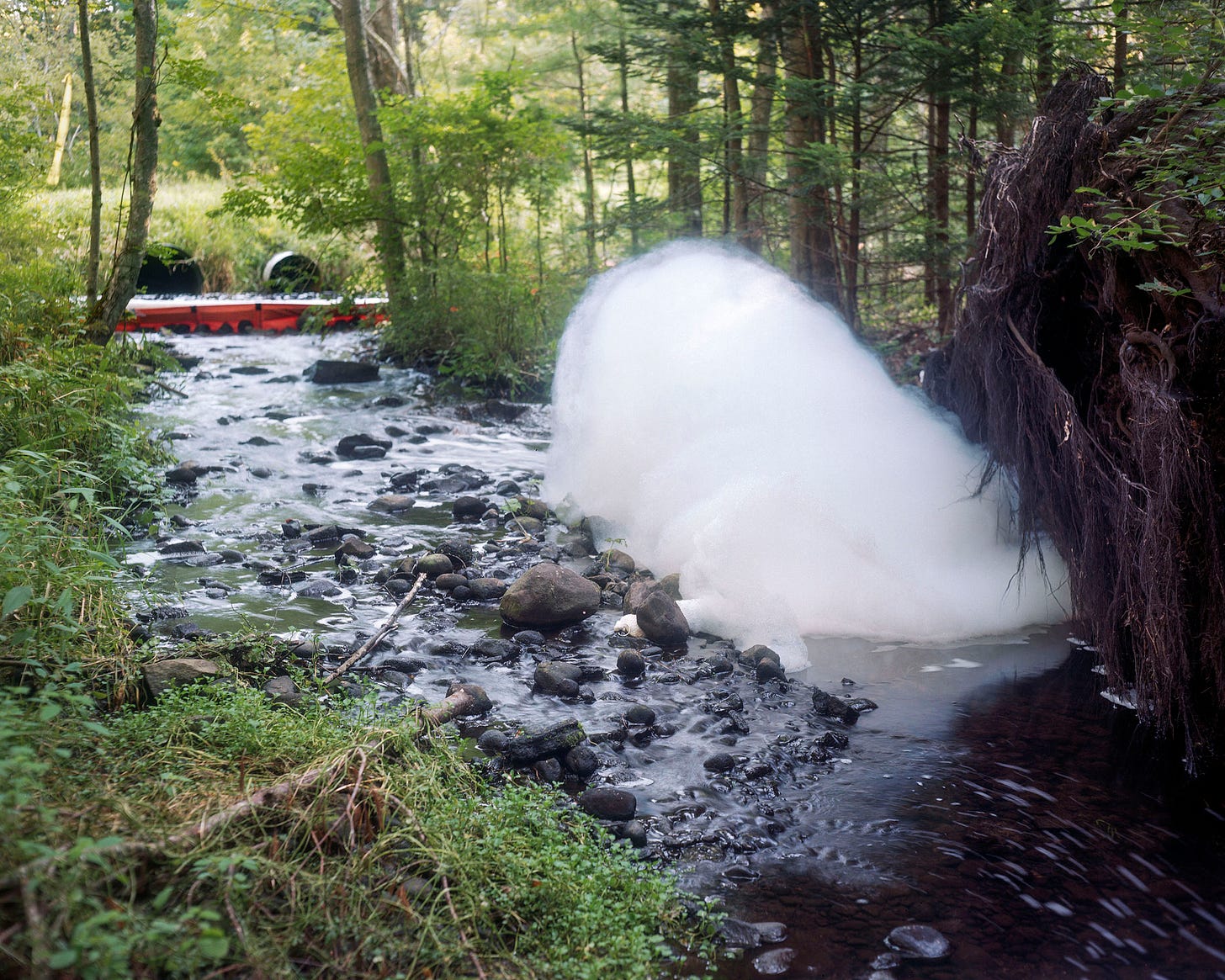It’s been a month since I last posted. I was traveling for April, taking much needed time away from working for others to focus on my own work, a little, but mostly to enjoy life. I flew into Albuquerque, New Mexico three weeks ago and just landed back in Boston earlier this week. At the end of my last post I had hoped to make a photo every day during my trip. At first I was disappointed with myself––my Sony stayed in its bag most days and my 4x5 hid wrapped in its dark cloth in the trunk with only a few exceptions. Half way through the trip, sometime in Tucson, Arizona, I realized that it didn’t really matter whether I made a photograph every day or not. I still made more photographs in April than I have in a long time and I renewed an inspiration that felt like it was dying. The one location I specifically planned to shoot, Holloman Lake, did most of the creative heavy lifting on this trip.
Let’s back up a little. In the summer of 2022, I began working on a project about PFAS, a few months after I read an article about their existence in Maine farmland and farmers, not far from where I grew up. Since then, I have discovered that these carcinogenic chemicals exist––thanks to the greed and secrecy of companies like 3M––all around us from within the water, soil, and blood of the largest cities to the most remote points on the globe. Maine has been at the forefront of research and policy with the Maine Organic Farmers and Gardeners' Association (MOFGA) beginning a lawsuit against the Environmental Protection Agency (EPA) last year.
My research, until recently, has been entirely focused on my home state. I wanted to keep the project personal and was hesitant to bite off more than I could chew. One of my earliest questions was, how do you photograph something that can’t be seen. My images focused on beautiful landscapes around Maine, polluted with high levels of PFAS, but appearing untouched. Though my own interest lies in these health-altering chemicals being all around us, invisible, I began to wonder if my audience may need to actually see that something is wrong within the land and not just read it alongside an image.
In August of 2024, there was a chemical spill at the Brunswick, Maine airport––1,450 gallons of firefighter foam leaked from a hangar into the surrounding environment. Firefighter foam is known for its extremely high PFAS content and because of their exposure, many firefighters have reportedly high levels of PFAS in their blood. When the spill happened, I combed through article after article, looking for clues to where I should photograph without being denied access. A day later, I drove out early before sunrise with a map in hand. Most places I’d marked were Navy territory, closed for public access. Finally, I pulled down a quiet wooded road to Merriconeag Stream where I found a small band of caution tape, but no one around. What I found was foam accumulation caught against rocks and roots, made more voluminous by the water’s movement. This was the first time I’d been able to see PFAS with my eyes. The photograph I made of the spill quickly became one of my most viewed images which left me wondering again, is this what people need, visually, to engage with this work?
This winter, Micah sent me an article about a lake outside of White Sands National Park, one of our destinations on our trip west. What I found was that in late January, Holloman Lake was reported to have the highest levels of PFAS anywhere in the world. Located just outside an air force base, the pollution wasn’t surprising, but the levels to which it existed were. Military bases have proven to be huge contaminators around the world with the Department of Defense (DOD) being one of the biggest users of PFAS, a fact many suspect is connected to the EPA’s history of overlooking and under-regulating these chemicals. Given such high levels, I found myself curious if the lake would appear contaminated like the spill in Brunswick. We added an extra day to our time in Alamogordo, the neighboring town, so I could investigate.






